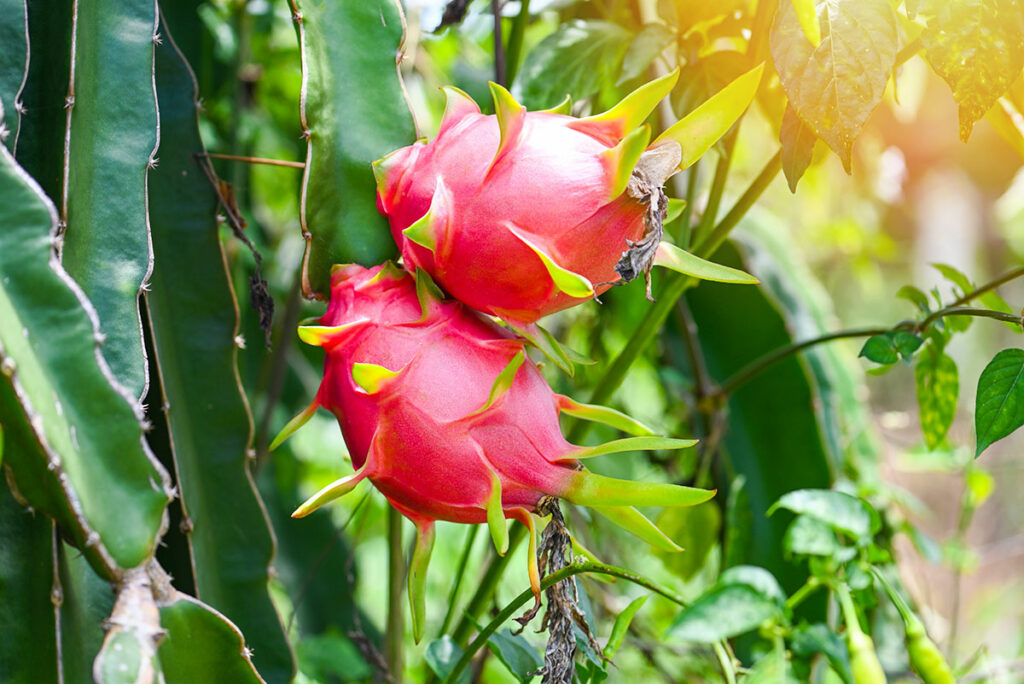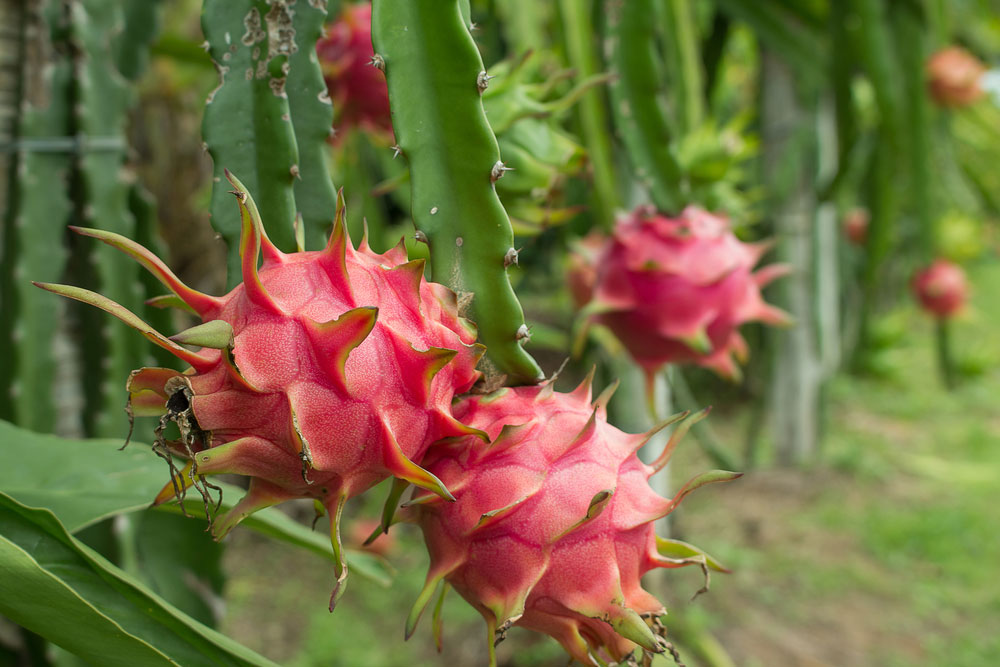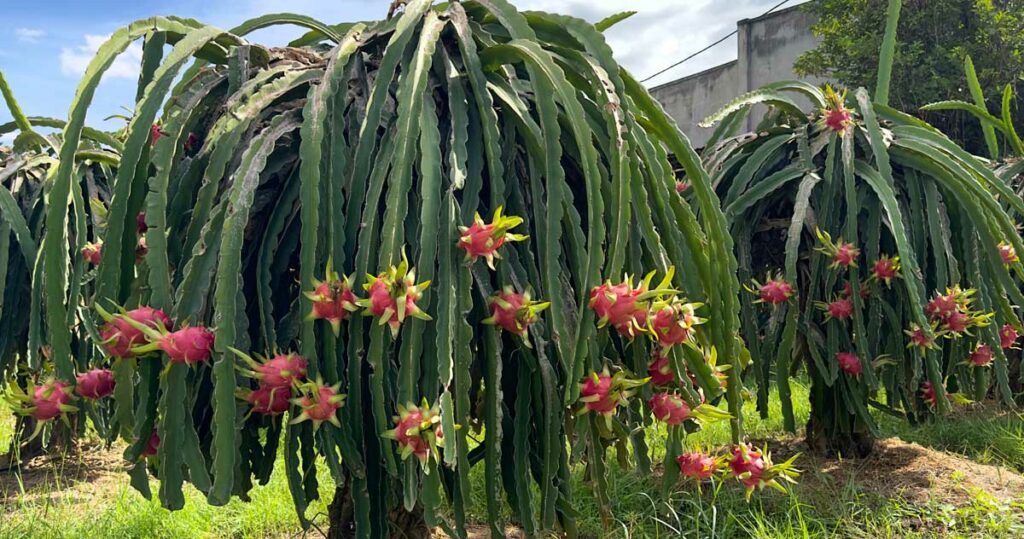
Dragon fruit popularity has skyrocketed in recent years. Many people in tropical areas all around the world have started to grow it.
If you’re one of those, you need to be aware of the issues your plant is likely to encounter.
This post will list the 10 common problems with dragon fruit plants. We’ll also provide the best solutions to address all these issues.
The 10 Most Common Problems With Dragon Fruit Plants
Here’s the list of the most common issues with dragon fruit plants:
1. Discoloration and Brown Spots
Despite being a cactus, dragon fruit sun tolerance is lower than other types of cacti. An extended period of extreme heat can cause a disease known as sunscald.
The disease’s symptoms start with the emergence of circular brown spots on the plant’s pads. If you leave the plant untreated, the disease can expand, causing the entire plant to rot.
The worst thing about sun-scald is that it makes your cactus more susceptible to other diseases. So, once sun-scald attacks your dragon fruit, it may quickly develop other problems as well.
The Solution
To avoid and minimize the effect of sunscald, place your dragon fruit in a shady location during the afternoon.
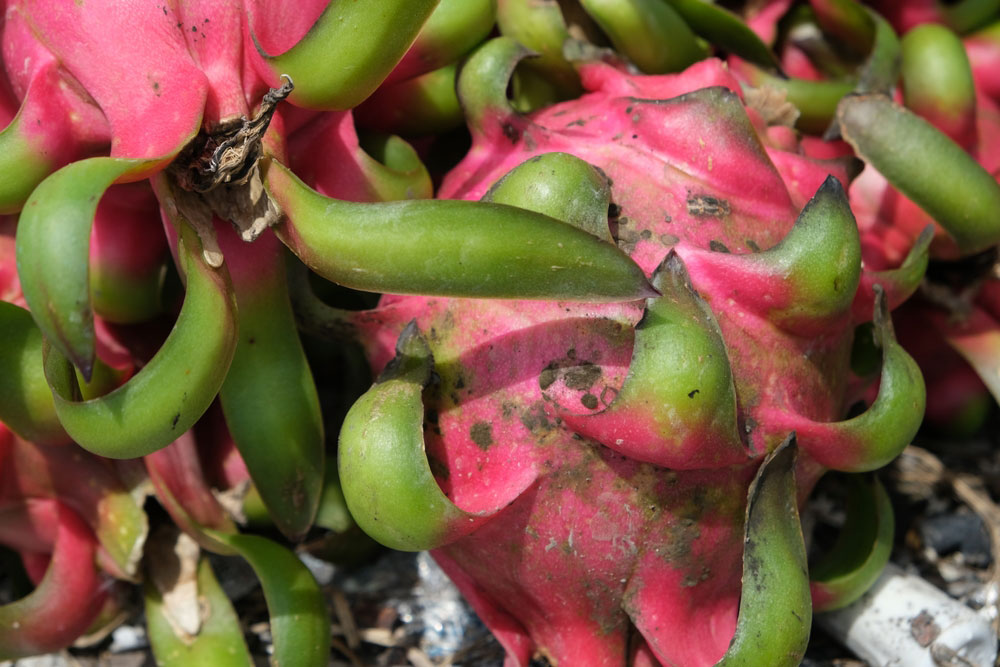
2. Yellow to Brown Spots on the Plant
One of the common problems dragon fruits encounter is a fungal disease called bipolarise cactivora.
The symptoms of this disease begin with the emergence of yellow and brown spots on different parts of the plant.
If not treated quickly, these spots become rotting areas, destroying the whole plant eventually.
The Solution
- Trim off the infected areas and dispose of them away from the plant.
- Apply a difenoconazole fungicide on the spots with infestation.
3. Overwatering and Underwatering
Although dragon fruit is a cactus, it requires more water than most other cacti. If you don’t provide it with the necessary hydration, this will negatively affect its blooming and fruiting.
Conversely, supplying it with excessive water will make it more susceptible to fungal and bacterial diseases.
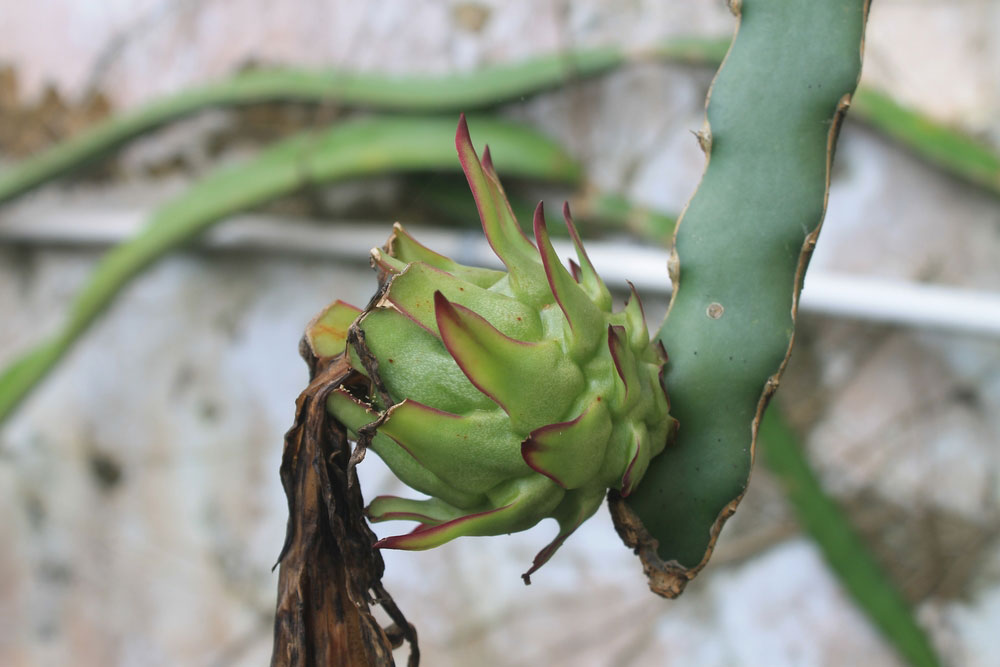
The Solution
To avoid any watering issue, this is how you should water your dragon fruit:
- Water the plants when their soil is nearly dry. This typically happens once every two weeks.
- Don’t water your dragon fruit during rainy periods. At that time, it gets all its water requirements from the rain.
4. No Flowers
Dragon fruits flower from early summer until mid-fall. If your plants don’t produce any flowers during this time, they’re facing health issues.
The plant might experience freezing temperatures or lack of sunlight. If you delay pruning dead branches, this also can affect flowering.
The Solution
- If the weather is too cold, move your potted plant to the warmest location in the garden.
- In case your plant is in a shady area, transfer it to a spot with more sunlight.
- Prune the dead branches of the plants to conserve their energy and nutrients.
5. Pest Attacks
Dragon fruit is an attractive target for multiple types of insects. These include mealybugs, spider mites, ants, thrips, and aphids.
These insects live on your plant and feed on its sap. As a result, the plant becomes weaker, and its production decreases over time.
Worse still, the existence of one type of pest can attract other types. For example, aphids attract ants by extracting a gummy substance called honeydew.
That way, when you start noticing these insects on your dragon fruit, you need to control them promptly.
The Solution
- Give the plant a blast with your garden hose to eliminate the insects.
- Cut off the stems with significant infection and dispose of them.
6. Reddish Brown Halo-Like Lesions
The most common fungal disease with dragon fruit is an infection called anthracnose. This infection appears as reddish-brown halo-like lesions.
If you leave it untreated, it can decrease the plant’s production and deteriorate its overall quality.
The Solution
- Apply copper fungicide on the infected areas.
- Clean and sanitize your pruning tools before and after using them.
7. Red and Brown Lesions on the Stems
Using unsterilized pruning tools can cause multiple problems with your dragon fruit plants. One of these issues is a fungal infection called Botryosphaeria dothidea.
This disease first appears as yellow areas on the plant’s branches. Then, it quickly develops into red and brown lesions.
Although Botryosphaeria dothidea doesn’t kill the plant, it weakens it and decreases its fruit production.
The Solution
- Ensure pruning tools are well-cleaned and sanitized before and after using them.
- Spray copper-containing fungicide on the infected areas.
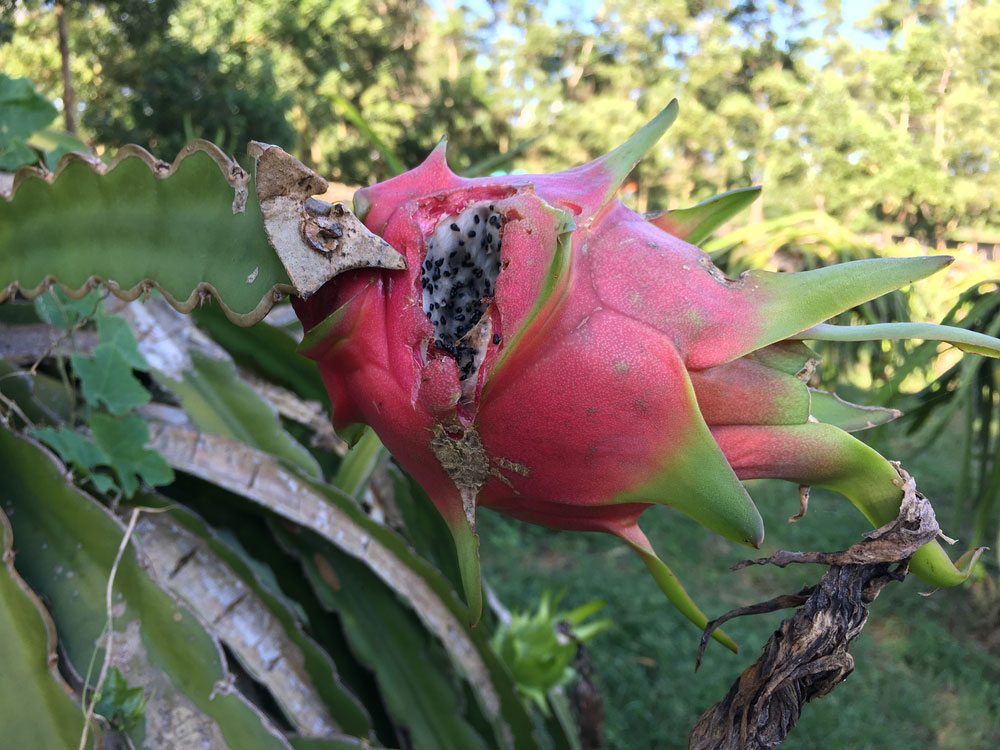
8. Brown Lesion near the Soil
Fusarium oxysporum is another fungal disease that can affect your dragon fruit plants.
This infection first appears as brown marks at the bottom of the plants, close to the soil. Soon after, the disease spreads up, dominating the stems.
Within a few days of infection, the plant becomes watery and soft. The deterioration of the plant’s health severely affects the quality of the produced fruits.
The Solution
There’s no guaranteed cure for Fusarium oxysporum. However, these procedures can help minimize its effect:
- Apply prothioconazole fungicide on the plant to control its spread.
- Move the infected plant away from other surrounding plants to prevent infection transmission.
9. Yellow Tips
If the tips of your plant’s branches turn yellow, your dragon fruit suffers from enterobacteria stem soft rot.
This disease attacks dragon fruits through wounds that are caused by insects or gardening tools.
Plants with nitrogen and calcium deficiency are more susceptible to this disease.
The infection stays unrecognized for at least 15 days before the tips start to discolor. Once the tips turn yellow, other plant parts quickly begin to rot.
The Solution
- Remove and dispose of the infected parts quickly to prevent the transmission of infection.
- Ensure you provide your dragon fruit with soil that contains all the necessary nutrients.
10. Green Splotchy Mottlings
If you notice green splotchy mottlings on the branches of your dragon fruit, your plant is infected with the cactus mild mottle virus.
This disease is also known as cactus virus X. The symptoms of this virus don’t show up in the early stage of the disease.
So, when you detect the virus, it’s highly probable it’s been in the plant for a while.
This disease negatively affects the growth of dragon fruits, especially young plants. The main cause of this disease is contact with infected plants.
The Solution
- Cut and dispose of the infected parts of the plant.
- Adhere to the watering and fertilizing requirements of dragon fruit to prevent future infection possibilities.
Wrap Up
Most of the 10 common problems with dragon fruit plants are fungal diseases. That way, with some preventive procedures, you can avoid the vast majority of them.
On top of these preventive measures comes cleaning and sanitizing your pruning tools.
In addition, regular caring for the plant can also minimize the probability of developing most health issues.





